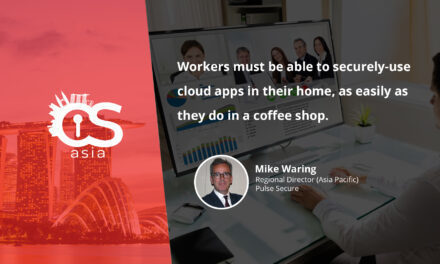Can tightening identity security degrade customer experience? In this case study, an online trading platform shows the opposite outcome
Online trading platform Tiger Brokers caters to what it calls “discerning investors” who have much at stake if they fall prey to phishing, data breaches and related cyber incidents on the platform.
On its 10th anniversary in March this year, the firm announced it was going to provide an added layer of protection for its Singaporean customers: seamless phone verification. Within two months, the feature was in place on the trading platform.
After the usual initial identity and password verification, legitimate users of the platform will experience automated multi-factor authentication instead of manual entry of the one-time password, which has already been proved to be vulnerable to comprise. Instead, a third party back end solution will take care of the identity authentication — through a patented process of verifying the phone number, SIM card and device data and IP address with a telco.
Overall, the firm’s metrics reveal a rise in state-sponsored and cybercrime adversaries exploiting legitimate credentials and identities to evade detection and bypass legacy security controls. Also:
- North Korea threat groups posed as legitimate US employees: Over 100 primarily-US technology firms had been infiltrated using falsified or stolen identity documents and insiders to gain employment as remote IT personnel to exfiltrate data and carry out malicious activity.
- Hands-on-Keyboard intrusions had increased by 55%: More threat actors had been engaging in such activities to blend in as legitimate users and bypass legacy security controls, with 86% executed by adversaries seeking financial gains. The increases in such attacks in healthcare (7%) and technology (60%) customers has rendered them the most targeted sectors in the cybersecurity firm’s metrics for the seventh year in a row. Adversaries including Chef Spider and Static Kitten (Iran-nexus) had been using legitimate remote monitoring and management tools for endpoint exploitation, accounting for 27% of all hands-on-keyboard intrusions.
- Cross-domain attacks have persisted: Threat actors have been increasingly exploiting valid credentials in order to breach cloud environments and eventually using that access to attack endpoints with minimal footprints in each affected domain.
- Cloud adversaries targeted the control plane: Cloud-conscious adversaries such as Scattered Spider have been leveraging social engineering, policy changes, and password manager access to infiltrate cloud environments and exploiting connections between the cloud control plane and endpoints to move laterally, maintain persistence, and exfiltrate data.
Since the system upgrade, Tiger Brokers has seen a 58% improvement in conversion rates for mobile registrations, and 17,000 users opting for the one-click login feature.
Looking ahead, the firm plans to enhance user experience and safety measures further. According to its CEO, Ian Leong, the initiative “reflects our dedication to leveraging innovative technologies to ensure our clients can trade with confidence.”
Stefan Kostic, CEO, IPification, the firm supplying the identity security backend solution: “Security shouldn’t come at the expense of convenience…”, exemplified by “offering Singaporean users a one-click solution that strengthens security without hindering their trading experience.”

















